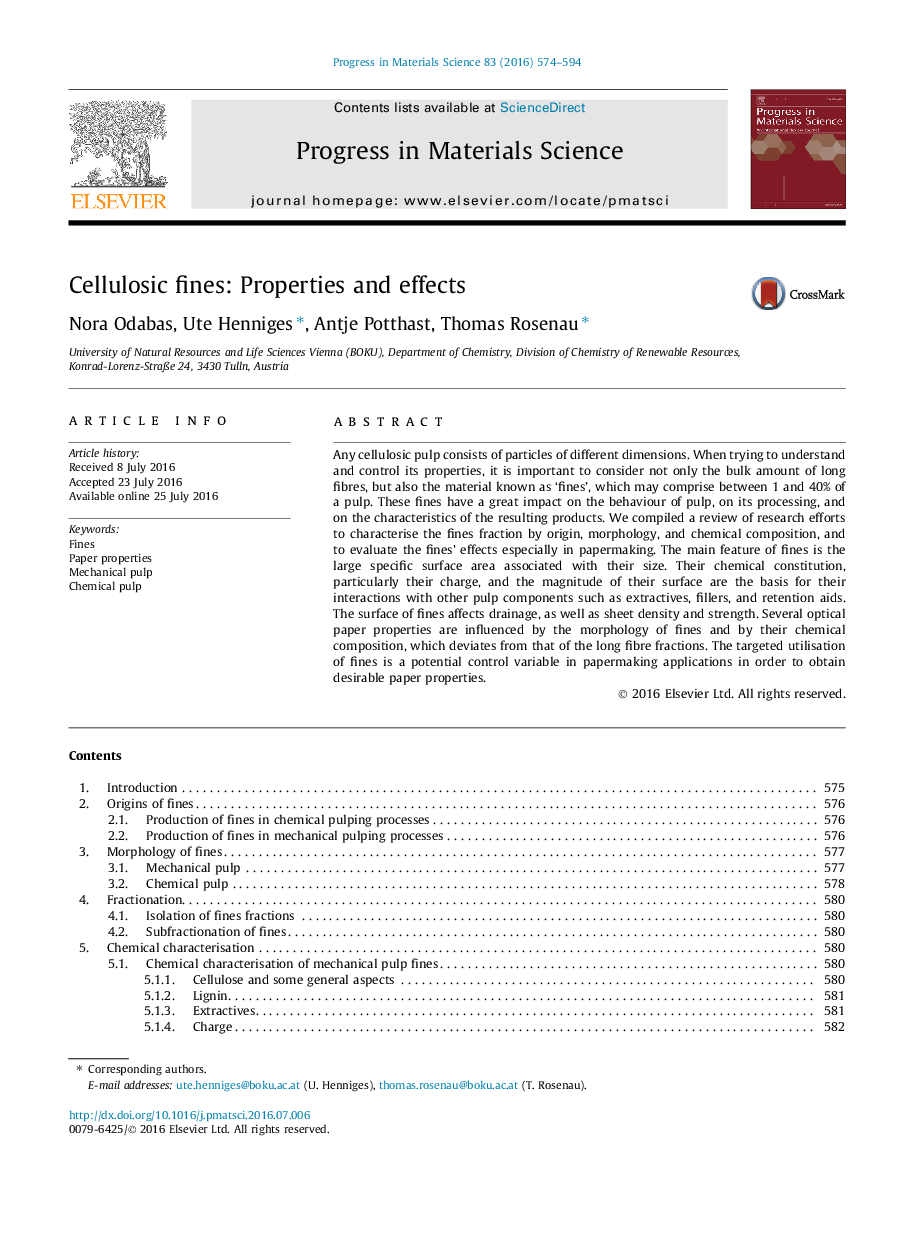| Article ID | Journal | Published Year | Pages | File Type |
|---|---|---|---|---|
| 1655805 | Progress in Materials Science | 2016 | 21 Pages |
Abstract
Any cellulosic pulp consists of particles of different dimensions. When trying to understand and control its properties, it is important to consider not only the bulk amount of long fibres, but also the material known as 'fines', which may comprise between 1 and 40% of a pulp. These fines have a great impact on the behaviour of pulp, on its processing, and on the characteristics of the resulting products. We compiled a review of research efforts to characterise the fines fraction by origin, morphology, and chemical composition, and to evaluate the fines' effects especially in papermaking. The main feature of fines is the large specific surface area associated with their size. Their chemical constitution, particularly their charge, and the magnitude of their surface are the basis for their interactions with other pulp components such as extractives, fillers, and retention aids. The surface of fines affects drainage, as well as sheet density and strength. Several optical paper properties are influenced by the morphology of fines and by their chemical composition, which deviates from that of the long fibre fractions. The targeted utilisation of fines is a potential control variable in papermaking applications in order to obtain desirable paper properties.
Related Topics
Physical Sciences and Engineering
Materials Science
Nanotechnology
Authors
Nora Odabas, Ute Henniges, Antje Potthast, Thomas Rosenau,
